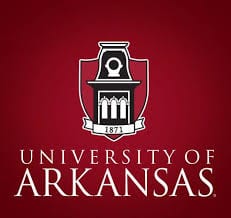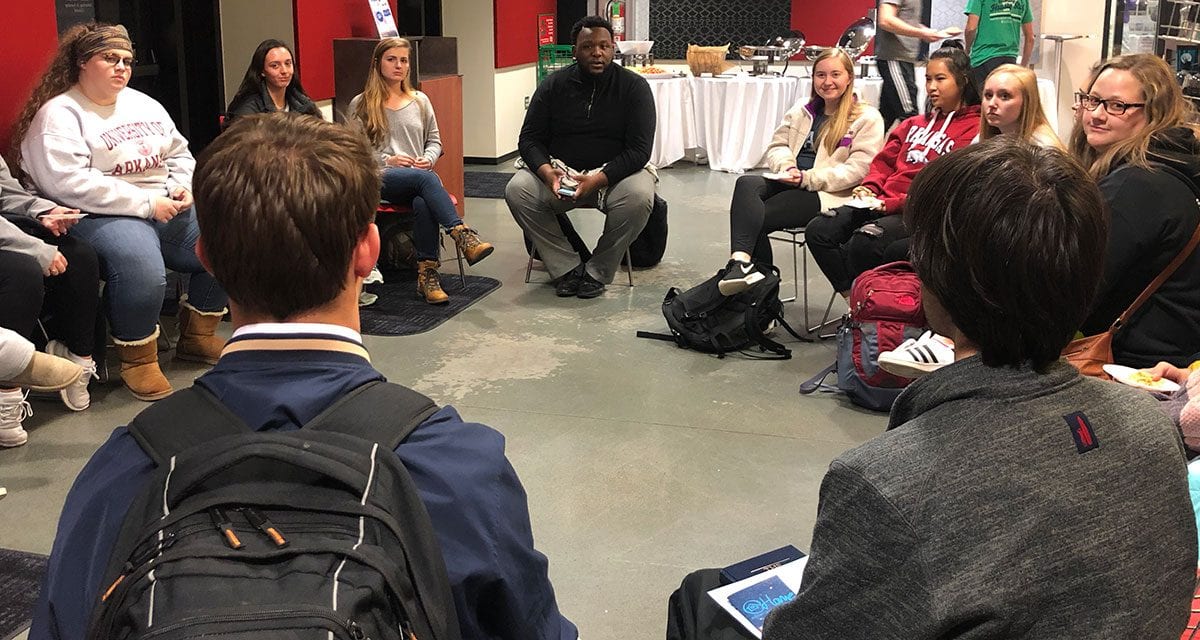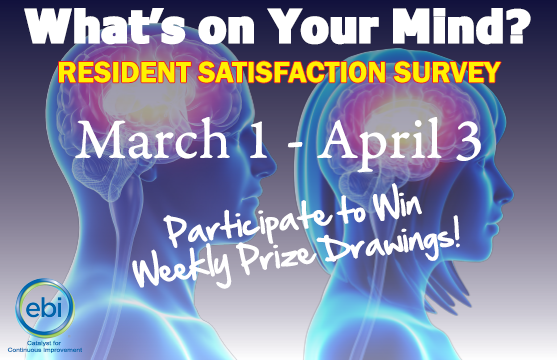Pictured above: AnReckez Daniels, center, leads a talk among participants about religious expression and discrimination. Daniels is an academic counselor with the Multicultural Center.
They were asked to plan a wedding.
However, participants at Embody the Belief quickly discovered that can be easier for some than others.
The event allowed students to take part in a fictional scenario where members of certain religious groups were not allowed the same access to merchants and government services.
“It made me mad,” said Grace Goedeker after the scenario during a processing discussion. Goedeker is a junior and resident assistant at Pomfret Hall.
“They were like, ‘You need this first. No, you need this first.’ They got the run around,” she said after some participants were treated with suspicion and disdain by the actors.
Participants were asked to do things like order food, get a venue, request a certificate of approval and convince the mayor to attend as a sponsor. University staff stationed various locations throughout the scenario such as a courthouse, market and city hall.
Goedeker and others were randomly divided into five groups by color. These groups represented different religious communities such as Jewish, The Church of Jesus Christ of Latter-day Saints , Hindu, Atheist and Muslim.
Her atheist “blue” group struggled with some barriers while planning their wedding, and other groups, such as the “red” Muslim group, were treated with hostility and threats by the local officials and merchants.
One red group member was threatened with arrest by the fictional sheriff in town.
At one point, green group member Josh Francis tried to organize the various groups to stand up for those in the red group.
“I saw the folks from the red neighborhood who were not doing so well. They kept being told to go back to this little square. I didn’t even see that their square [neighborhood] existed at first.”
Roleplay and Religion
Following the scenario, participants were asked to identify their feelings about what happened. They did this by placing stickers on white paper sheets on the wall with headings like insecure, fearful, content and angry.
Students went to a nearby Einstein Bros Bagels for snacks and a discussion of what happened during the scenario.
A staff member met the students and encouraged them to talk about what they just experienced. AnReckez Daniels is an academic counselor with the Multicultural Center. He facilitated the discussion with probing questions for students to consider.
“So what did you think about that experience,” Daniels asked the circle of students.
That question prompted Goedecker to respond with how it made her mad.
Daniels listened and encouraged everyone in the group to express their thoughts about the event.
There were also a number of tables set up nearby where religiously oriented registered student organizations (RSOs) could talk to provide information about their beliefs.
“The simulation is meant to provide only a snapshot scenario of the impact of discrimination and stereotypes people of minority belief systems face. We hope the students will learn to respectfully explain how their personal belief system influences their personal values in an educational environment, as well as, the ability to discuss the privileges or barriers associated with their spiritual identity. ” said Grace Crifasi, a coordinator for residence education (CRE) and event organizer.
Embody the Belief was held Nov. 13 at Williard J. Walker Hall. It is part of University Housing’s signature @Home series of programs.






Recent Comments